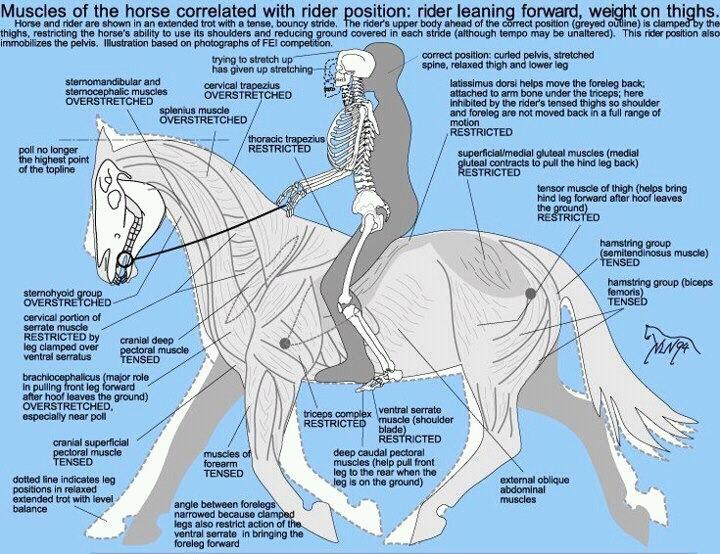copyright 2012 - 2013 rights reserved, RiderAwareness - Norah Dombrowski

Horse Science
Knowledge about how the horse functions and how they interact with a rider. This information is so valuable in understanding how we should interact and read our horse.
Knowledge about how the horse functions and how they interact with a rider. This information is so valuable in understanding how we should interact and read our horse.
Anatomy and Movement
Regardless of the language you can see how the horse moves. It also shows different frame positions and where they apply pressure or not.

The grey rider is in a correct balanced seated position.
The skeleton rider is stiff and forward, poorly sitting.
This is not a correct "light" or "half seat" balanced position which is not shown.
The skeleton rider is stiff and forward, poorly sitting.
This is not a correct "light" or "half seat" balanced position which is not shown.
The dotted white horse frame is correct in position.
The grey / light grey horse is tense even though the horse's nose is on the vertical. These moments happen, always work toward the horse's nose just slightly in front of the vertical, opening the throatlatch area.
The grey / light grey horse is tense even though the horse's nose is on the vertical. These moments happen, always work toward the horse's nose just slightly in front of the vertical, opening the throatlatch area.
The Video below is a must see!
I feel validated because I was taught to train and ride over the back many years ago, thank you coaches.
The Horses -Thank You!
I feel validated because I was taught to train and ride over the back many years ago, thank you coaches.
The Horses -Thank You!
Lameness is not the only expression of physical pain, anticipation of a given movement or, more generally, anticipation of entering the show ring, worry, nervousness, gait abnormalities, frustration, anger, shutting off, and many other behaviors are expressions of pain.